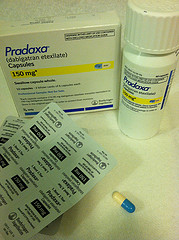Once upon a time there was a girl that loved to run just for the fun of it. She woke up early one morning on a cold and rainy March morning, excited to run the Rock Creek River Gorge Trail Run at Prentice-Cooper State Forest, just outside Chattanooga, Tennessee. She had run this race before and was wowed by the gorgeous gorge views and challenging single track trails.

She signed up for the 10.2 mile run but wasn’t feeling exactly right that morning. She couldn’t put her finger on it. She was just a little off but that wasn’t going to stop her! She bounced out of bed and decided to do the 6.5 mile option instead of the 10.2—a decision that turned out to be one of the best she ever made.
The start was a little fast. Everyone was ready to get moving on the chilly and very wet morning. Soon the 158 runners headed into the woods and formed a single line, slowing the pace which was a good thing. The trails were incredibly slippery with tons of thick mud after much rain that winter. One runner took a face plant when crossing the creek and came up with a big gash on his forehead and blood dripping down his face.
“Are you OK said the girl?”
“Yes, I am just happy to be out here,” he responded.
“Me, too!” she replied. There were smiles on everyone’s faces as they headed up steep hills and carefully focused on the each step.

At the half way mark, she was feeling OK but a little more tired than usual. No problem she said to herself, just having an off day. It was time to focus on other things, talk to people, make some jokes and carry on. She found a guy wearing a shirt that said, “Idiot Runner’s Club – Run, Smile, Drink Water and Don’t Die.” This sounds like my kind of runner thought the girl! They chatted and laughed about how slow they were going but how happy they were to be there instead of sitting on a couch or still sleeping in bed. The mud was so thick that their shoes nearly got sucked off but happily they went up yet another hill.

Even though she wasn’t moving very quickly, her heart was starting to race quite fast. She slowed down and was walking more than running. She put her hands in the air a few times feeling like it was getting a little hard to breathe. Just focus on the gorgeous trails and it will be over soon, she told herself.

There is that Idiot Runner again. He caught up and they were passing each other back and forth. It was time for more chatting and laughter. Only a few more hills and it will be time to relax and enjoy the day. One final push, climbing up through the narrow Indian Rockhouse and the race is almost over.
It is only 6.5 miles, she thought why does this feel so hard? She had run 50Ks and didn’t feel this bad. There goes a female racer. She will have to see if she can catch her but just felt so tired and ready to stop. Then she heard the crowd and knew that the end was near. She pushed as hard as she could one final time to make it to the finish line—she did it! And then she decided to sit down for a minute, she really didn’t feel so good … and then there was darkness …
…what is that noise?
She was waking up and heard a loud noise – it was her heart pounding at an incredible rate and a bright light in the distance. Someone was saying something to her, if she could only get to the light. She woke and found herself inside the medic tent with two physicians by her side. Her legs were cramping with the worst pain she had ever felt. Where was she? What had just happened? What was her name? Which hospital did she want to go to? So many questions…
She was being placed in an ambulance and sent to the local hospital. She was in rapid rate Atrial Fibrillation and needed a Cardizem drip to get her rate down. They admitted her to the hospital and the nurse came by to explain what A Fib meant. She drew a nice picture for the girl.

She learned that A fib occurs when one or both of the upper chambers of the heart – called the atria – don’t beat the way they should. This can cause blood to pool in the left atrium, where a blood clot can form. If that clot breaks away, it can travel to the brain, where it can cause a type of stroke called an ischemic stroke.

Two and half days in the hospital she waited for the meds to convert her heart back to normal sinus rhythm. They placed a band on her wrist that said “fall risk” – they had no idea.

The doctor decided the only way to get her heart back to normal rhythm was to cardioconvert using an electric shock. She was wheeled down to the operating area and what a surprise– she saw the two doctors that were at the race. One was a cardiologist and the other was an anesthesiologist for cardiology. They were chatting and laughing and encouraging her that it was all going to be OK. Her cardiologist was running late and it delayed the procedure. He was known for this as he always took time with his patients. Right as the doctor arrived; the nurse looked at the monitor and said wait—she converted on her own! We don’t need to shock her heart. The girl was happy and believed that it was actually going to be OK— maybe not happily ever after but OK. She smiled as she remembered the new friend she had just met on the trail…
“Run, Smile, Drink Water and Don’t Die.” Now those were words to live by.
The End.

JoAnna Brogdon, forty-three years old, went into a fib several times since the race and was hospitalized twice. She has no underlying chronic conditions and the doctors are unable to tell her why she has had a fib. She believes the worst part of the condition was the emotional stress and not being able to exercise as she had in the past. She underwent a cardiac ablation recently and her heart has been beating normally since. She is hopeful that she has put a fib behind her at least for now and looks forward to running, traveling and feeling normal again. JoAnna wants to support those that struggle with a fib and may be contacted at joannabrogdon@hotmail.com.





















